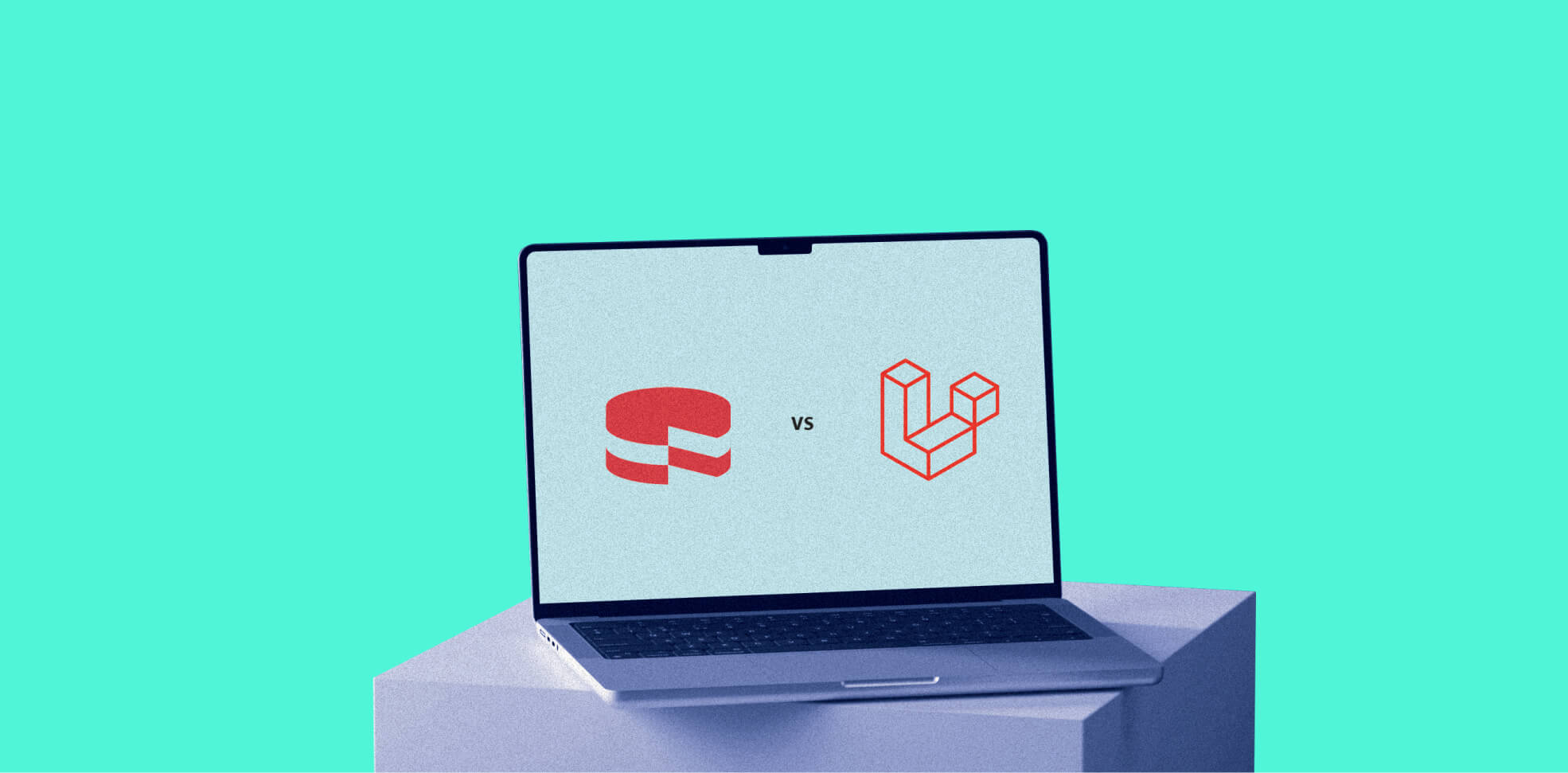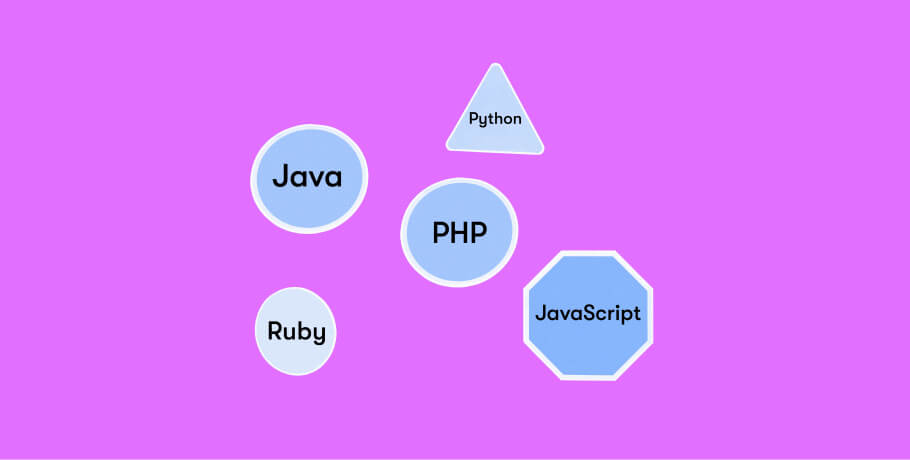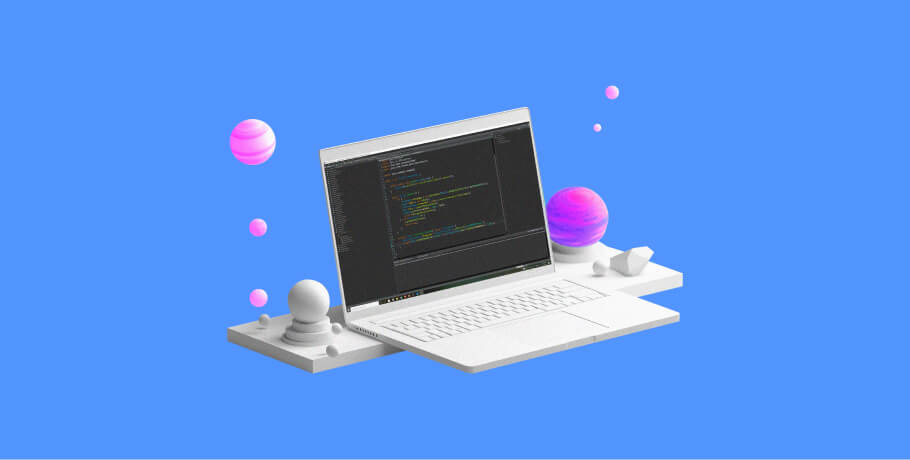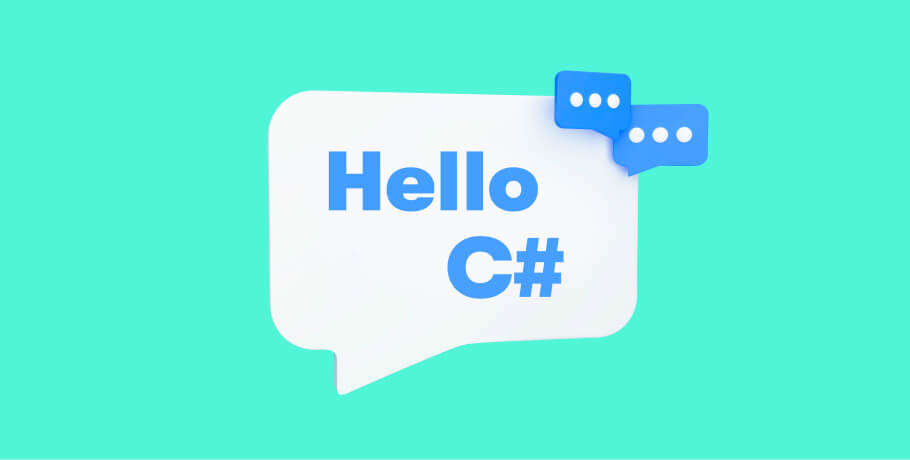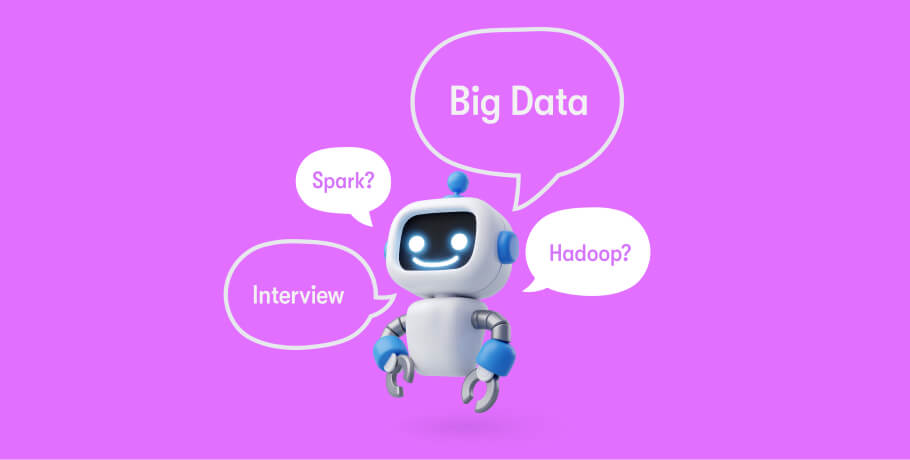At first glance, CakePHP and Laravel might seem like they have little to no comparison at all. After all, they’re both PHP frameworks, both open source, are built on a model view controller (MVC) architecture (though CakePHP employs an HMVC — hierarchical model view controller — approach, which we’ll detail below), and both have huge community support. So what’s there to compare?
And although these PHP frameworks may look the same on the surface level, the real differences come alive when you dig into their features, benefits, structure, cost, PHP syntax, and more.
The truth is — there’s a lot to say in the web development world when there’s a CakePHP vs Laravel debate.
So let’s go ahead and explore the pros and cons of PHP Cake vs Laravel, and see which of these programming languages score a win in your book.
What is Laravel?
Alright, before we dive deep into the topic, let’s first get a well-rounded understanding of what Laravel is.
Laravel is a free to use (also known as open source), object-oriented PHP framework that currently stands out as one of the most popular in use, according to Google Trends. Released in June 2011 by Taylor Otwell, this web framework presently operates under the MIT license banner.
According to Taylor, they created Laravel to provide an alternative to CodeIgniter, and it took inspiration from Symfony for many of its features. Both CodeIgniter and Symfony are PHP frameworks.
Pros of using Laravel
- Extremely scalable
When it comes to app development, Laravel is highly scalable. How, you ask? This is mainly because Laravel is equipped to do tasks such as two-way data binding, allow swift and easy migrations, perform unit testing, integrate with messaging apps, and do lots more. Aside from that, Laravel also has a plethora of features that it can use to its advantage, such as its Artisan tool, or Eloquent, its object relational mapper (ORM). It also includes a templating engine, extensive libraries, and HTTP support.
Side note: These are the most important features that form the tip of the iceberg. There are many more features Laravel possesses.
- MVC structure
The model view controller architecture is a well-liked feature amongst Laravel developers because it helps them logically categorize data when creating web applications or websites. What it essentially does is allow programmers to divide functions into three components: the model, the view, and the controller (the view is what your customers view, the controller decides how customers interact with what they view, and the model is where the crux of the data that you input into your web solutions lies.)
- Community support
When you provide development services or are neck deep in the middle of a developmental environment, what you need is community support — people who can help you leap through the learning curve or can become a part of your network. Thankfully, due to Laravel’s popularity, it has huge community support across the globe (in fact, Laravel itself hosts Laracasts for its community).
Cons of using Laravel
- Not as secure
Since Laravel is an open source language, one of the drawbacks that come with it is that most of the syntax is freely available online (which is good as it allows many people to develop custom web solutions), but also bad considering that anyone can grab it online and send malicious attacks on your server. To protect its users and to provide secure maintenance of data, it has measures such as passwords and user authentication in place.
- Complex to learn
If you know how to work with a programming language of any kind, be it server side or client side, and whether it’s HTML or PHP, then Laravel wouldn’t be too difficult to grasp. But it will still require committing to a learning curve nonetheless. When compared to easier languages such as CodeIgniter, Laravel may be considered complex to learn.
Popular applications built with Laravel
Websites like Invoice Ninja, My Rank, Alison, World Walking, Delta Net Travel, and web applications like Koel.dev, October CMS, Flarum, and more were built using Laravel’s configurations.
What is CakePHP?
Built and dubbed as “cake” by Michal Tatarynowicz, CakePHP 1.0 launched in May 2006. It was developed using the Ruby framework in mind. Much like Laravel, CakePHP, too, is available under the MIT license on GitHub, allows HTTP routing, and has its own ORM.
Unlike Laravel, whose MVC architecture implements a two-way data binding process to drive applications, CakePHP is built on an HMVC (hierarchical model view controller) architecture, and this equates to not offering a data binding process. The simplified trade-off here is whether your needs lean more toward speed and less complexity (CakePHP, no data binding), or the demands of large-scale, more complex projects (Laravel, and its two-way data binding design).
Pros of using CakePHP
- Support for many SQL types
CakePHP has a database abstraction layer that provides access to libraries. This means that you can connect this programming language to MySQL, SQLite, PostgreSQL, PearDB, and other databases. The purpose of such databases is that it becomes easy to upload and manipulate data with their support.
- Can support small data sets while providing same features as Laravel
While Laravel is known to support bigger ecosystems and more complex designs, CakePHP can manage smaller websites well while providing developers with almost the same amount of features as Laravel. Developers can use CakePHP to create websites of smaller scope and still use (almost) the same capabilities as Laravel. It also means that if those developers are familiar with Laravel, they won’t have to go through a huge learning curve.
- Simpler methods
CakePHP is overall a more easy-to-use framework, because it has better performance, allows users to reuse code, customize functionalities, and even provides swift tests. That said, Laravel may be considered the more flexible option for many developers, because it is able to handle data and documentation easily.
Cons of using CakePHP
- Inline templating
Inline templating means you don’t need to constantly add new lines when creating code. The templating method is generally considered unfavorable amongst the development community, mainly because elements can break, you can only use them to create small structures, and the width can be only as long till the inline extends, amongst many other reasons. On the flip side, they also provide some benefits, such as not occupying extra space and flowing in a consistent manner.
- Other drawbacks
Many users consider CakePHP’s documentation process to be a bit lacking, and how it would benefit from adding some guidelines. Aside from that major disadvantage, developers have also expressed some concerns over its default one-way routing, the fact that you can’t always easily migrate to the current version of CakePHP, and that you need to update URLs constantly.
Popular web solutions built with CakePHP
Names like Edureka, Swat.io, Zumba, Walls.io, SeatGeek, Fast Mediaz, Wicked Weasel, Form Assembly, and others were made using CakePHP.
Laravel vs CakePHP: speed
Now, gravitating back to the CakePHP vs Laravel discussion, here’s how both these frameworks compare in speed.
Laravel
Truth be told, Laravel is not the fastest framework out there. But it does offer a few ways for PHP developers to improve speed, such as bundling up assets, removing white space from the text, making images more optimized (and optimizing other parts of the syntax as well), caching queries, routes, and configuration.
CakePHP
In the CakePHP vs Laravel speed debate, CakePHP wins this round because although it's not particularly known for its speed, it is considered to be much faster than Laravel. However, one sure shot way you can improve the speed of CakePHP (if it's lacking according to your standards) is by optimizing images.
CakePHP vs Laravel: security
In the battle of CakePHP to Laravel, this is the area where CakePHP shines brighter than Laravel.
Laravel
For the most part, Laravel is considered to be a secure platform. For example, it has an authentication system which allows only the necessary owner of the project to access it. You can beef up Laravel security by adding force HTTPs, reducing raw queries, choosing a secure server, updating to the latest version of the language, and more.
CakePHP
The general consensus is that CakePHP is better in terms of security when compared to Laravel. For example, with CakePHP, you can use features like CSRF (cross site request forgery), which allows you to avoid malicious attacks, and also use encryption and decryption, which means that users will need to provide a key to access the project. There are also other security measures that CakePHP provides.
Laravel vs CakePHP: scalability
Let’s consider scalability as one factor in the CakePHP vs Laravel debate.
Laravel
Since Laravel is built on an MVC architecture, it is considered to be one of the best PHP frameworks for scalability. You can create enterprise-level web applications and even build ecommerce sites with ease using Laravel. Rest assured, it offers all the features you need to scale, such as customization, built-in widgets, and the option to use multiple languages.
CakePHP
CakePHP, too, is built on the MVC architecture, which means that you can scale projects and add customizations using this framework too — though, as we mentioned above, those that require less complexity to execute. However, the general consensus is that CakePHP handles websites of smaller scopes, and can process smaller datasets, better than Laravel.
want to work with the latest tech?
Join EPAM Anywhere to revolutionize your project and get the recognition you deserve.
CakePHP vs Laravel: performance
The most important question of all. While both of these frameworks are known for their robust features, let’s see how these two languages compare when it comes to performance!
Laravel
Laravel has an excellent performance record, and this framework thrives when you couple it with large scale projects that can test its capabilities. You can also conduct performance testing on Laravel to see how the end result of your web solution will turn out to be.
You can also expect features like better template engines, data backup, detailed documentation, and multiple plug-ins as part of the Laravel package. However, if speed is on your mind, then rest assured that the community offers support on how to improve performance.
CakePHP
Using CakePHP means seeing faster performance than Laravel, as it might deal with projects of smaller scopes (ergo, smaller data sets). The fact that it doesn’t offer a data binding process is an added reason why it sees better speed. You can conduct swift tests to see CakePHP’s performance.
CakePHP or Laravel: developer salaries
Laravel
According to data published by Pro Coders, a Laravel developer would usually charge $47.37/hour in the United States, $36.04/hour in the United Kingdom, $34.62/hour in Germany, $25.30/hour in Ukraine.
CakePHP
As per Don’t Do It Yourself’s insights, the average fee of a CakePHP developer is $46.92 per hour (the price may go as high as $85/hour). Again, prices depend on what part of the globe you live in.
Laravel and CakePHP comparison table: check the features
| CakePHP | Laravel |
| Open source, uses HMVC architecture | Open source, built on MVC architecture |
| Considered are one of the most secure frameworks | Secure framework |
| Database oriented document model | Object oriented model |
| Can use small data sets | Cannot use small data sets |
| No data binding | Two-way data binding |
| Templates using Underscore | Templates through HTML attributes |
| Works on MVC architecture | Works on valid HTML elements |
| CakePHP ORM | Eloquent ORM |
| Thriving community support | Thriving community support |
CakePHP vs Laravel: differences between CakePHP and Laravel and choosing the best fit for your project
Take a look at how these two frameworks compare side-by-side.
| Laravel | CakePHP | |
| Speed | Not the fastest | Faster than Laravel |
| Security | Good security | Better than Laravel’s |
| Scalability | Suitable for larger projects, and more scalable than CakePHP | Suitable for smaller projects, and less scalable than Laravel |
| Performance | Good performance overall, best suited for complex projects, provides performance testing | Has better performance than Laravel for smaller projects, allows the use of swift performance testing |
| Developer fees | Fees may range from $25.30/hour up to $47.37/hour | The average fee of a CakePHP developer is $46.92/hour |
Truth be told, CakePHP and Laravel each have their list of benefits. The only thing you need to consider is the use cases that are most applicable to make a decision on which PHP framework to choose for your project.
Here’s our bare-bones advice:
- If you have a smaller project, consider CakePHP, as it is faster and more secure than Laravel.
- If you have a larger project, then we suggest you move forward with Laravel, as you can scale better by using its features and capabilities.
Conclusion
Just to summarize, this table draws an overall comparison between both PHP frameworks on multiple factors, helping you decide which framework takes the cake, and for what.
| Factors | Winner |
| Speed | CakePHP |
| Security | CakePHP |
| Scalability | Laravel |
| Performance | CakePHP |
| Development cost | Both CakePHP and Laravel are similar |
| Talent pool | CakePHP and Laravel are tied here as well |
Now that you have understood the benefits of using Laravel and CakePHP, and have compared them against each other, we’re sure you’re more equipped to decide which PHP framework is best suited for your needs.
Closing out with our original question of “what to choose for web development: CakePHP vs Laravel,” this is where we stand: you need to first understand what your project requirements are — maybe you’re creating a web solution for the purpose of scaling, maybe you need a website that runs fast, maybe cost is your primary concern, etc.
Once you identify why you’re undertaking the project and with what goal(s), you need to discern which framework would be able to help you where, and then make a conclusive decision. Alternatively, take a look at how Laravel compares to CodeIgniter.
FAQ
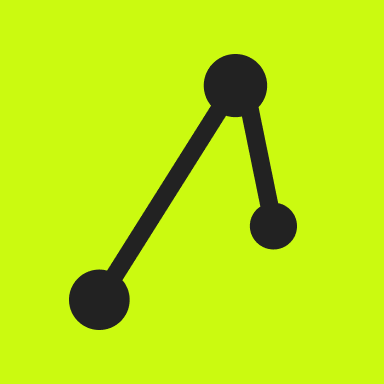
The EPAM Anywhere Editorial Team is an international collective of senior software engineers, managers and communications professionals who create, review and share their insights on technology, career, remote work, and the daily life here at Anywhere.
The EPAM Anywhere Editorial Team is an international collective of senior software engineers, managers and communications professionals who create, review and share their insights on technology, career, remote work, and the daily life here at Anywhere.
Explore our Editorial Policy to learn more about our standards for content creation.
read more
